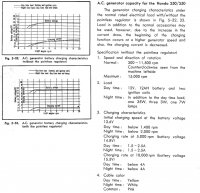I've been working on this bike, just put in a new battery and it starts right up. Had some trouble keeping a charge like most CB350s so I strapped a voltmeter on the tank, went for a ride. I'm reading 13 to 14.5 V when between 3000 - 7000 RPM. Good. When I open it wide, it climbs to 15.3 V. It seems to stop there as though the Regulator was working. Is this normal? I thought 12.6V batteries should only see up to 14.5V before starting to boil and gas... Could I be drying out my battery?
Any help would be appreciated.
Any help would be appreciated.





